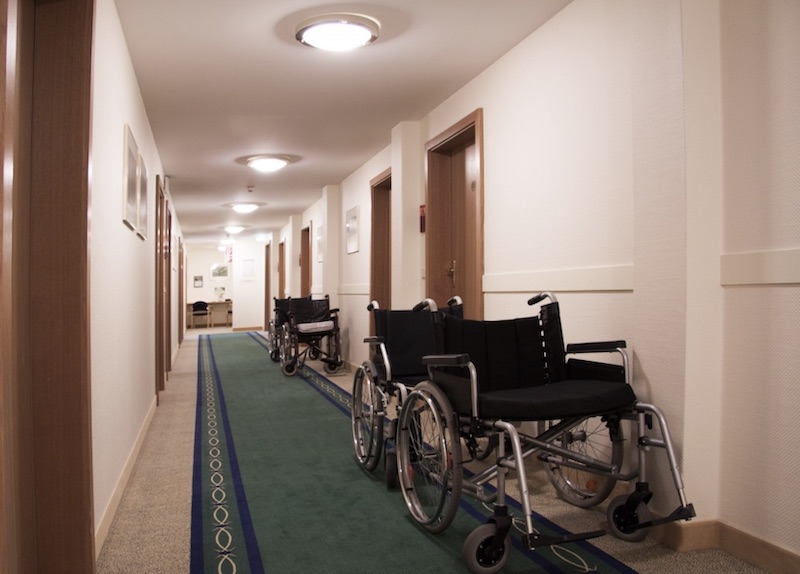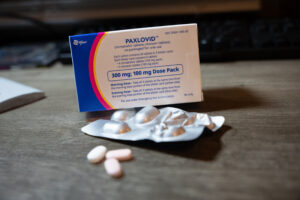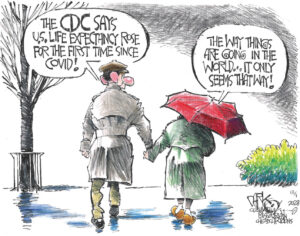Predators Home In on Developmentally Disabled Women
It’s time society took seriously the care and protection of its most vulnerable citizens. pxhere
pxhere
Julie Neward’s sister, Natalie, is developmentally disabled. She is “nonverbal”: her only form of communication is moaning. She moans when she is hungry, when she wants a bath or when she is tired. Natalie communicates well with her eyes, however, and she is able to walk. Neward explains that Natalie’s body functions differently than most women’s. She does not menstruate. She can’t make tears, nor does she have sweat glands.
Although Natalie, 37, lives at home, during the day she visits a day care facility for disabled people.
One day, in 2012, as she was driving home from work, Neward received a phone call from an urgent care center, where her mother had taken Natalie.
“It was a nurse from an urgent care facility, telling me I had to bring my sister in to receive an antibiotic,” Neward recalls. “Natalie had just been diagnosed with gonorrhea.”
For Neward, the diagnosis explained the many health issues her sister had been suffering from in the previous months. Their mother had noted changes in Natalie’s behavior. She would moan all night and was not sleeping well. She would not urinate in her diaper.
“When she didn’t improve, we decided to see what may have contributed to her behavior,” Neward says. “We pulled her medical records from the clinic, as I am her co-conservator and I had the right to see them. I saw she was being treated for a urinary tract and yeast infection. But no one looked at why she was having these recurring problems.”
Natalie has a seizure disorder that had been successfully managed for years, but one weekend during this period, she suddenly began having recurring epileptic episodes.
“Her body was under attack,” Neward says. “My mother brought her to urgent care and finally a doctor—a woman—randomly tested her for STDs [sexually transmitted diseases]. No one [had previously] thought about sexual assault.”
Natalie lived at home, with her mother and her younger sister. Her only exposure to men was through the day care facility. When they realized that someone there had sexually abused Natalie, they immediately followed up.
“The facility settled with us immediately,” Neward recalls. “They said we should not have called the police. My mother signed a nondisclosure agreement, so she cannot reveal the name of the facility or the settlement. Makes me wonder who else was harmed, as Natalie was probably not the only victim.”
Natalie’s story is not unique among women and girls with developmental or physical disabilities. The American Psychological Association estimates that women with disabilities have a 40 percent greater chance of suffering violence and abuse than women without disabilities.
And that estimate may be on the low end. According to the Center on Victimization and Safety at the Vera Institute of Justice, sexual abuse, rape, assault and unwanted pregnancies among developmentally disabled women is largely underreported.
Such women are targets for other types of abuse as well, include neglect, the withholding of mobility devices or medications, not receiving medical care when needed or being denied food, access to community resources or assistance in getting out of bed or getting dressed; some are even left in soiled undergarments.
Karyn Harvey, a Baltimore psychologist, says that women with intellectual disabilities often don’t know how to tell someone they have been sexually or physically abused. They may be uncomfortable and sense that something bad is happening, but they don’t know how to verbalize the trauma they have experienced. After an assault, their behavior may change—they may even become violent—as a way of dealing with their emotions. Such behavior is frequently dismissed as “acting out,” rather than serving as a stimulus for exploring its trigger.
Harvey notes that the population of people with intellectual and developmental disabilities is growing. In 2004, one in 166 children was diagnosed with autism. Now the figure is 1 in 59, according to the Centers for Disease Control and Prevention. The number of children born of women who have abused opioids, crack cocaine and alcohol is also growing, which contributes to the population of children born with intellectual and developmental disabilities.
Harvey recalls the case of a friend’s daughter who has autism. One day, the girl started exhibiting aggressive behavior, throwing things and acting out. When her caregivers began exploring the cause of the behavioral change, they discovered that the girl had been abused, and that the perpetrator was still in her class–she was continuing to see him every day.
Harvey said her friend went through 15 different therapists to find the right help for her daughter.
“We need clinicians now more than ever,” she says. “It’s a civil rights issue. Too often these people will be overmedicated for control; they are not being treated for the trauma they have experienced.”
When it becomes necessary to remove an abusive caregiver from the home, new challenges arise. Rhoda Olkin, a Northern California psychotherapist, says it can be especially difficult for people with physical disabilities to change caregivers, partly because of the difficulties inherent in change and the special needs that must be accommodated. “The barriers to making a change are monumental when you think about all the things a caregiver does,” Olkin says. “Who will go to the grocery store? Who will take care of the car? Who will cook meals? Who will change the batteries in the wheelchair?”
Olkin can cite many incidents of caretaker abuse. One client, for example, was taken to the toilet, then left there while the caregiver went off and had breakfast. One disabled woman was taken for a walk by her caregiver, who happened to be her son. During the outing, they had a disagreement, and the son expressed his anger by removing the batteries from his mother’s wheelchair, leaving her stranded on the sidewalk.
The limited number of qualified caregivers available is another problem for the disabled. The scarcity of responsible caregivers means that it’s often the caregiver who gets to choose the client, not the other way around. Olkin notes that some abusers choose to accept clients specifically because they are seen as exploitable. “When you cede control to someone,” she says, “there are many things that can happen,” ranging from physical abuse to financial theft.
Olkin cites a clear need to increase training requirements and selection standards for those who apply for jobs caring for disabled people in nursing homes, assisted-living centers and in private homes. But such jobs tend to pay poorly, and the work itself is not particularly respected in our society.
“[Caregiving] should be seen as an honor,” Olkin says. “We should upgrade the role.”
Nora Baladerian, a psychologist in Southern California, has countless stories of patients with developmental and intellectual disabilities who have been abused. In many cases, the abuse was not immediately recognized, and the victims did not get therapy.
“The regional centers annually assess many aspects of the person’s life, except sexual abuse,” Baladerian says, referring to nonprofit private corporations that contract with the California Department of Developmental Services to provide for or coordinate for individuals with developmental disabilities. “Victimization [and] sexuality is not on their list. The regional centers seem to resist this issue,” she says.
Unaddressed sexual abuse tends to recur, Baladerian says. The best way to protect a loved one is to let those who have contact with them—for example, caregivers, medical professionals or drivers—know that the family is highly aware of the potential for abuse.
Baladerian has developed a tool called “My Power is After” to help disabled women identify and verbalize abuse. She teaches them to become human video recorders, to observe everything around them—where they are, what they see, even what they smell.
Part of the training involves teaching them that, if something out of the ordinary happens, they must immediately alert someone they trust. She teaches them not to eat, drink, change clothes or shower after an attack, to get to the hospital as quickly as possible, and to report everything they see, hear and taste.
Baladerian has had some success with her training. She recalls a client who received the training and was later abused on a bus coming back from her day program. The bus driver had altered the route and dropped the other clients off first, leaving Baladerian’s client until the end of the run, when he abused her. When he finally dropped her off at home, she told her mother what happened, and reported everything she saw and heard. When the bus driver pulled back up at the school, the police were waiting for him.
Baladerian has also created a tool for families to keep an eye on their disabled female relatives. She advises family members to make a list of everyone who has access to their relative and review it monthly for changes. The list should include the names, license numbers, credentials and schedules of everyone who has contact with the relative throughout the day, including teachers, school bus drivers, therapists and daycare employees. If someone does not want to give you the information, Baladerian says, find someone else. It’s much the same as when hiring a babysitter. More information is detailed in her book, “How to Reduce the Risk of Abuse to People with Developmental Disabilities.”
While these tools have been helpful, the lack of specialized therapists who provide trauma treatment for abuse victims with disabilities is a problem. However, Baladerian says that a new program will be launched this year to train therapists in trauma therapy for crime victims with developmental disabilities.
But unless society begins to take seriously the care for our most vulnerable citizens, including children and adults with disabilities, it is unlikely laws or attitudes will change.
The preponderance of care for the disabled will most likely continue to fall to the family, and a disabled woman without close friends or family to scrutinize those who come in contact with her will remain exceptionally vulnerable to those who would do her harm.
Your support matters…
Independent journalism is under threat and overshadowed by heavily funded mainstream media.
You can help level the playing field. Become a member.
Your tax-deductible contribution keeps us digging beneath the headlines to give you thought-provoking, investigative reporting and analysis that unearths what's really happening- without compromise.
Give today to support our courageous, independent journalists.






You need to be a supporter to comment.
There are currently no responses to this article.
Be the first to respond.